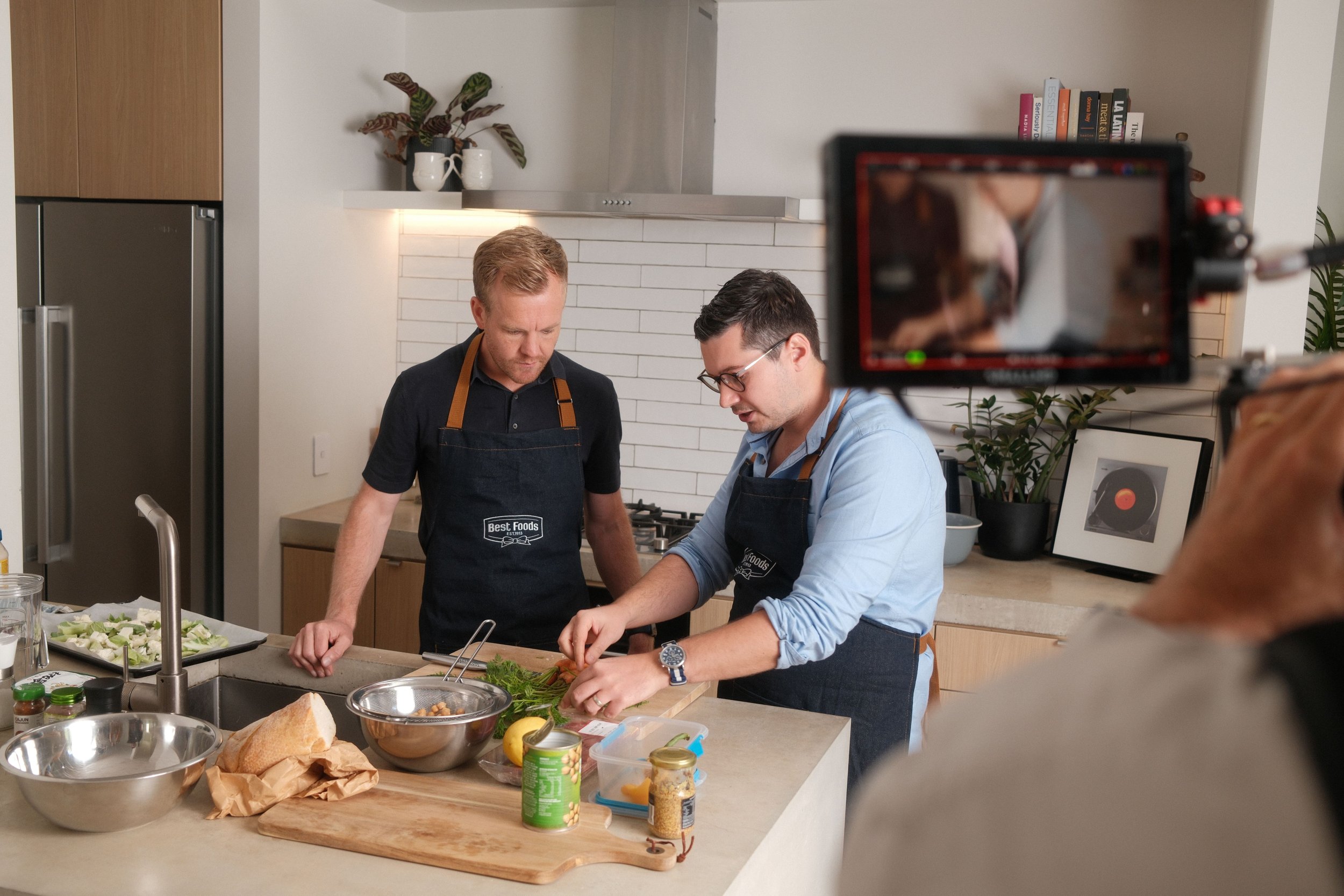Why real, human storytelling will always beat perfectly polished AI
Matty McLean and Elliot McClymont captured at the Best Foods Second Chance Sundays 2024 content shoot.
The other day, walking through Auckland CBD, I stopped in front of a new poster for a big, reputable brand. It was immaculate, glossy, balanced, algorithmically complete. Then I noticed the spray-paint scrawled across it:
“AI SLOP.”
It stopped me in my tracks. Not because of the tagging, but because of what it said about the moment we’re in. The rebellion wasn’t just against advertising; it was against artifice.
In a world now flooded with flawless, machine-made imagery, that messy act of protest felt oddly refreshing. It reminded me that what people crave most from brands isn’t perfection, it’s authenticity.
The illusion of polish
AI has given brands infinite gloss. Every image is perfectly lit, every headline rhythmically balanced, every caption grammatically sound. But polish can’t replace pulse. Here in Aotearoa, we have a sixth sense for sincerity, we can tell when something feels imported or engineered.
My dad always reminds me of Leonard Cohen’s line: “There is a crack in everything. That’s how the light gets in.” I think about that often when I look at creative work. The crack, the imperfect, the honest, the human, is where connection lives.
But that doesn’t mean craft is the enemy. The best work marries authenticity with intention. It’s crafted to feel human, not flawless, guided by instinct, empathy, and skill. The art lies in shaping the real, not sanitising it.
A campaign like Best Foods’ Second Chance Sundays worked because it didn’t feel manufactured. It showed everyday Kiwis in their own kitchens giving leftovers new life, laughter, mess and all, with storytelling that felt recognisably local and joyfully human. No filters, no forced tone, just craft used in service of truth.
Why authenticity builds trust
The most powerful moments are rarely scripted; they happen when you let real emotion lead.
The Kindness Collective’s Santa Stories campaign brought this to life, sharing the heartbreaking yet hopeful stories parents tell their children about why Santa might not come. Those honest voices shaped every creative choice - turning truth into empathy and empathy into action. It reminded Aotearoa that every child deserves Christmas, and the real spirit of the season comes from sharing, not spending. This is what truly gains trust and attention.
The problem with perfect
AI-generated content can dazzle, but it’s predictable. It flattens emotion, erases nuance, and removes the beautiful contradictions that make stories human. Authentic storytelling, on the other hand, thrives on tension, the gap between what’s expected and what’s felt.
When Pead helped reclaim the World Record for the Largest Haka to raise funds for the Raukatauri Music Therapy Trust, it wasn’t about spectacle; it was about spirit. Thousands of people, Māori and non-Māori alike, came together to express unity, strength, and pride in a way that couldn’t be staged or simulated. You can’t script that kind of energy; it comes from shared purpose, not production polish.
How brands can stay real in an automated world
Authenticity isn’t an aesthetic; it’s a mindset. It’s about leading with truth and showing your process, not just your perfection. And good craft, design, writing, storytelling, helps that truth land.
Speak like a human. Drop the jargon. Real language builds real relationships.
Empower voices, not assets. The magic often comes from the people closest to the story - customers, employees, communities.
Show the making-of. Transparency breeds empathy. People want to see how things come to life.
Use AI as a tool, not a tone. Let it spark ideas or speed but let humans shape the meaning.
Choose courage over control. A small wobble or unscripted laugh says more about your brand than any perfect line ever could.
Respect the craft. Authenticity doesn’t mean careless - polish matters when it’s earned through intention, not automation.
The courage to be genuine
It takes bravery to be real. To speak plainly when others are posturing, or to show warmth instead of gloss. But that’s the kind of bravery that audiences reward, and the kind that defines Kiwi creativity.
At Pead, the work that moves people most - from food waste turned into family meals, to joy delivered to children at Christmas, to a nation reclaiming its cultural mana, all share one thing: they feel honest. They remind us that the future of brand storytelling isn’t about sounding flawless; it’s about being felt.
Polish might impress. Authenticity connects.
As automation floods our feeds, the brands that will endure are those that still sound unmistakably human, brands that speak with empathy, humility, and heart. Because audiences aren’t asking for perfection anymore. They’re asking for proof that someone real is still behind the message.
That “AI SLOP” tag wasn’t vandalism, it was feedback.
A reminder that in chasing perfection, we risk losing the one thing machines can’t fake: the truth and beauty of being human - and the craft it takes to tell that well.

